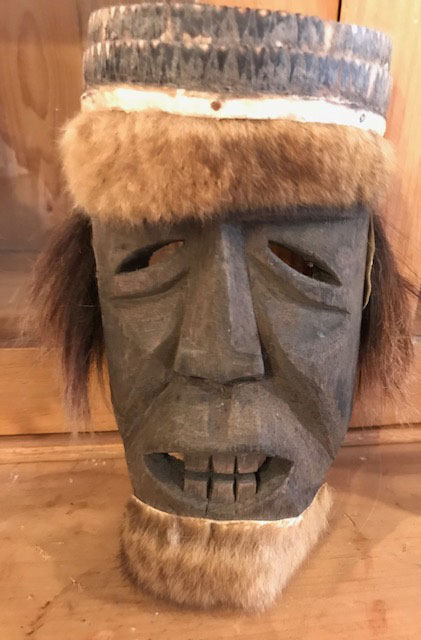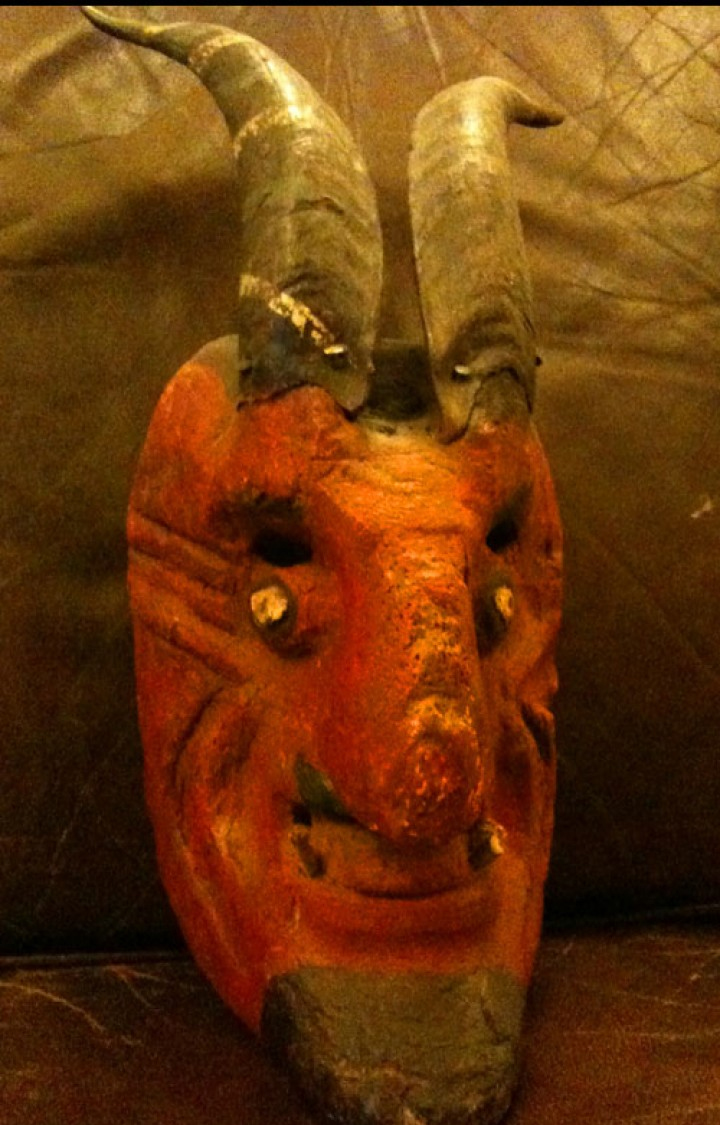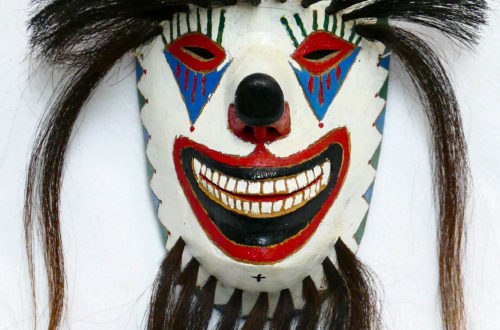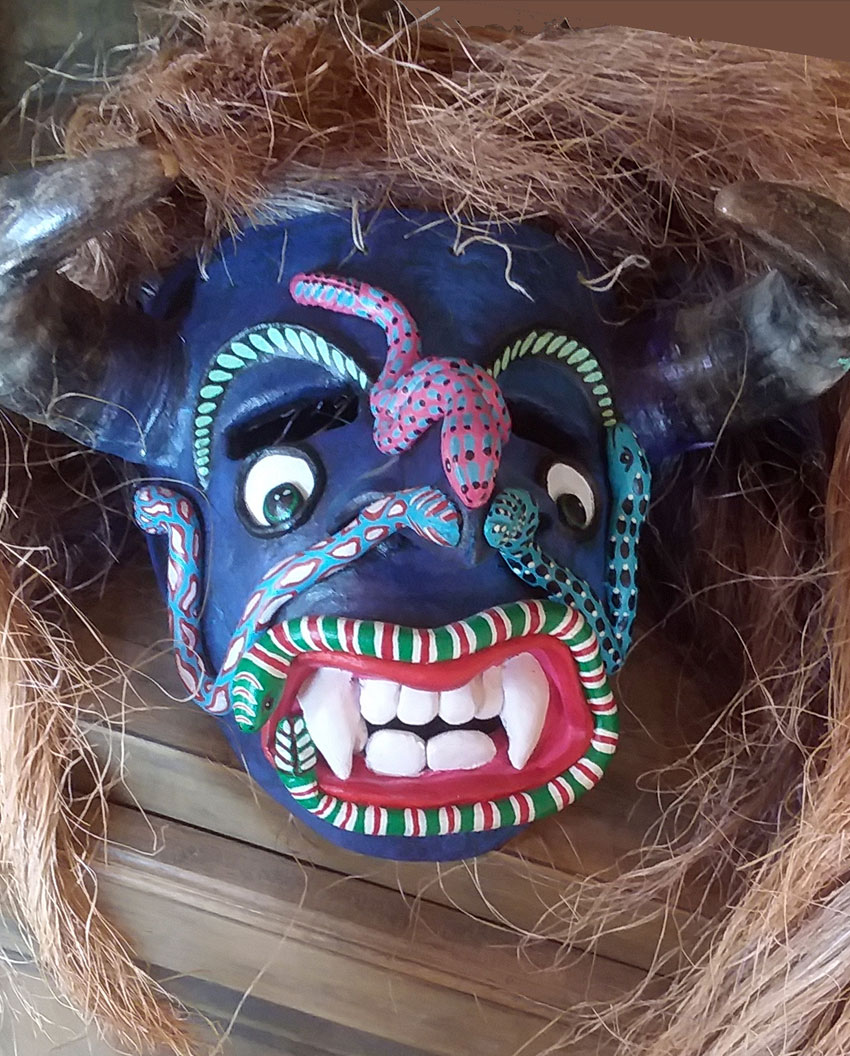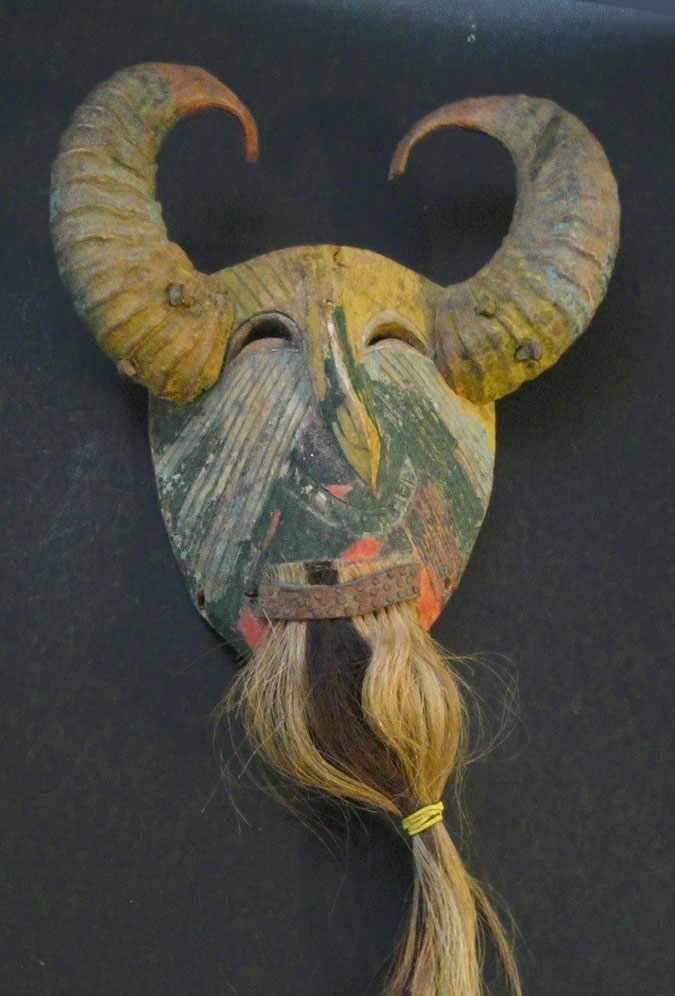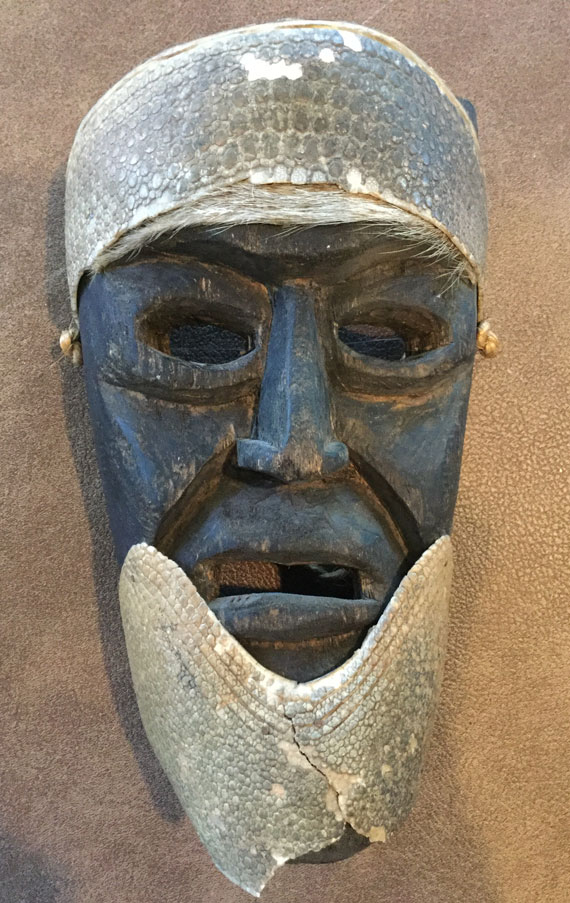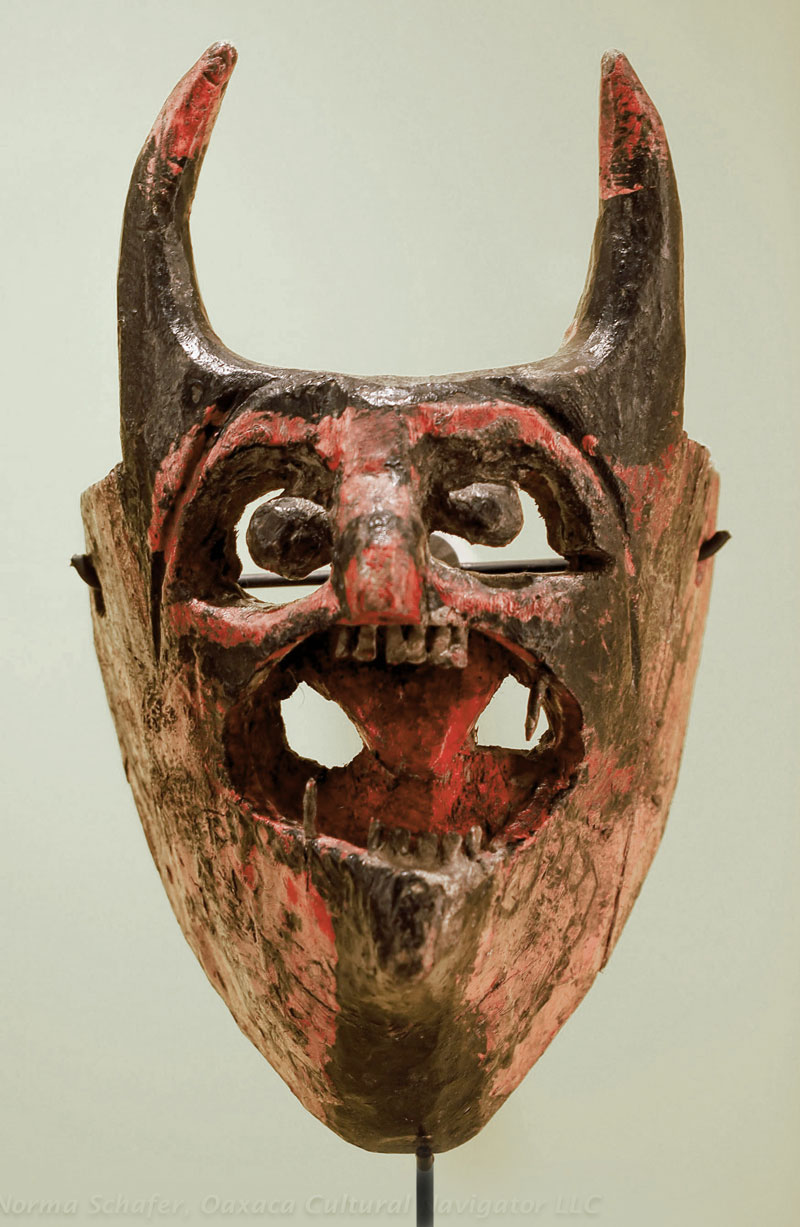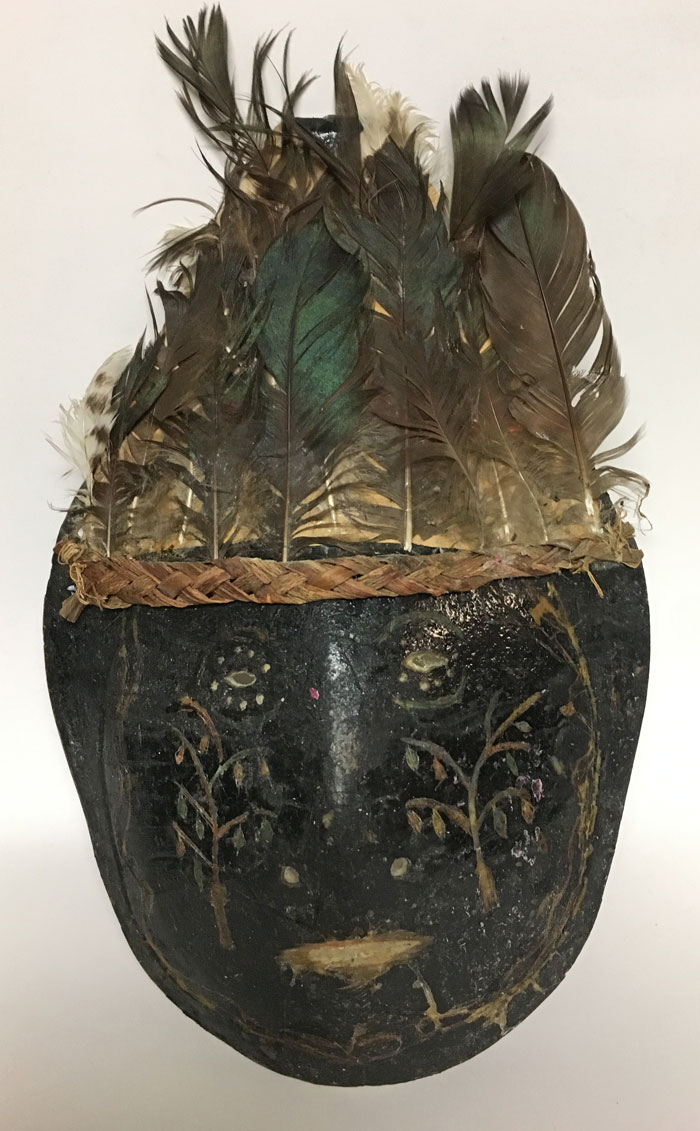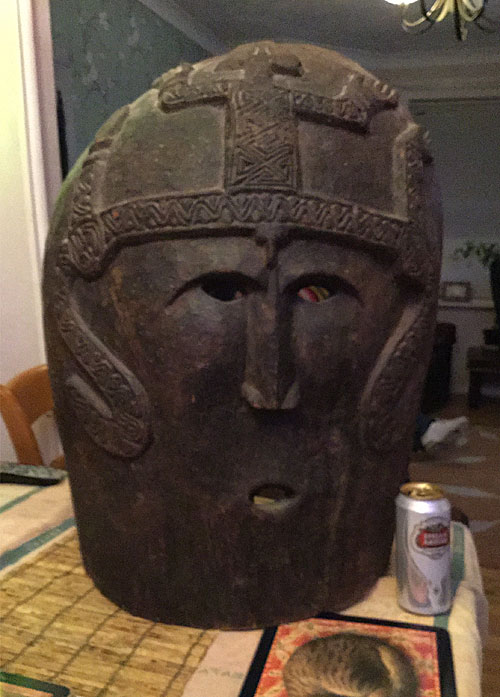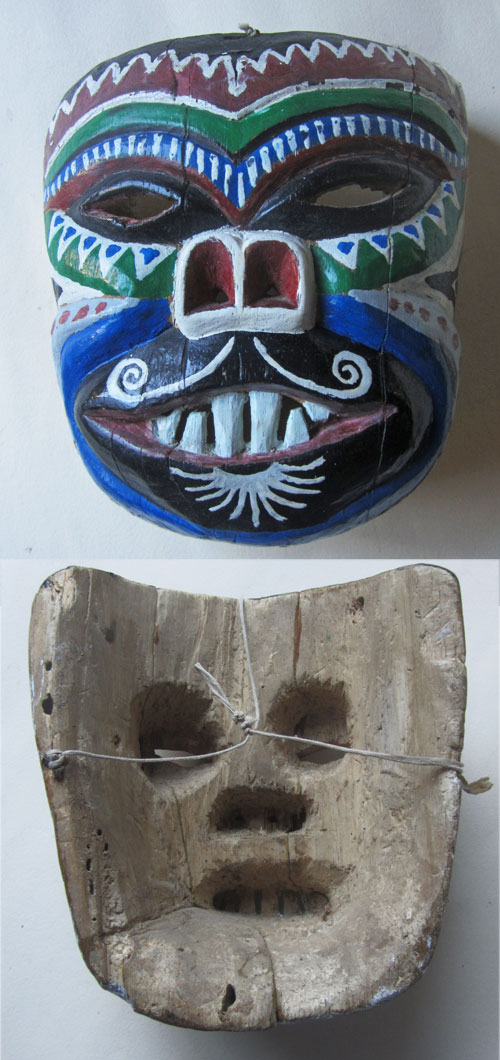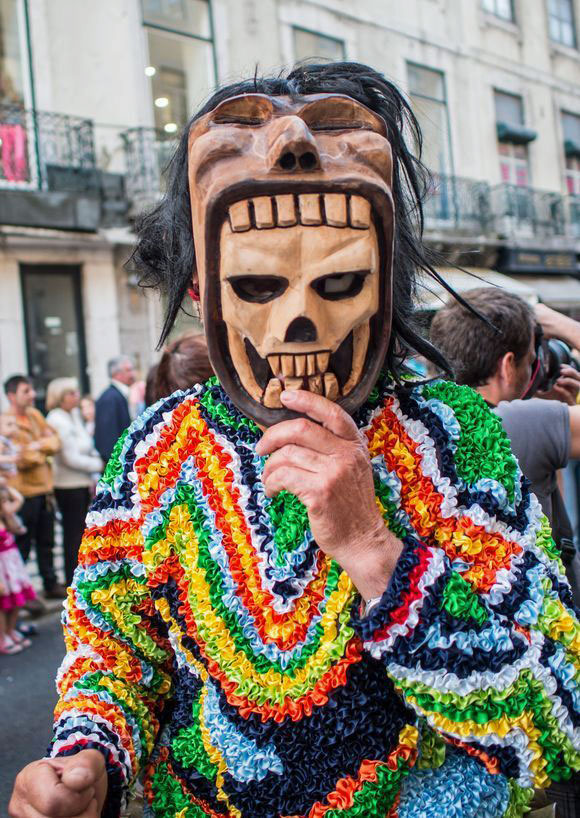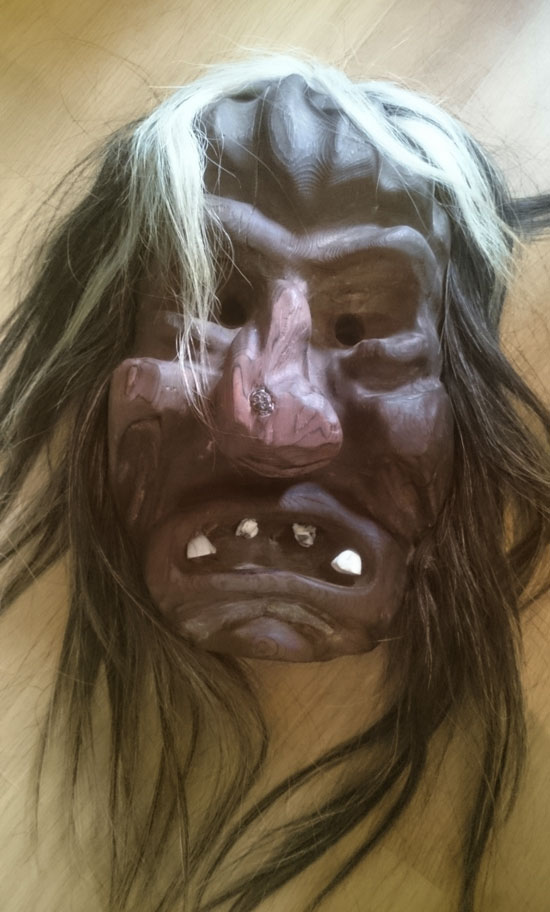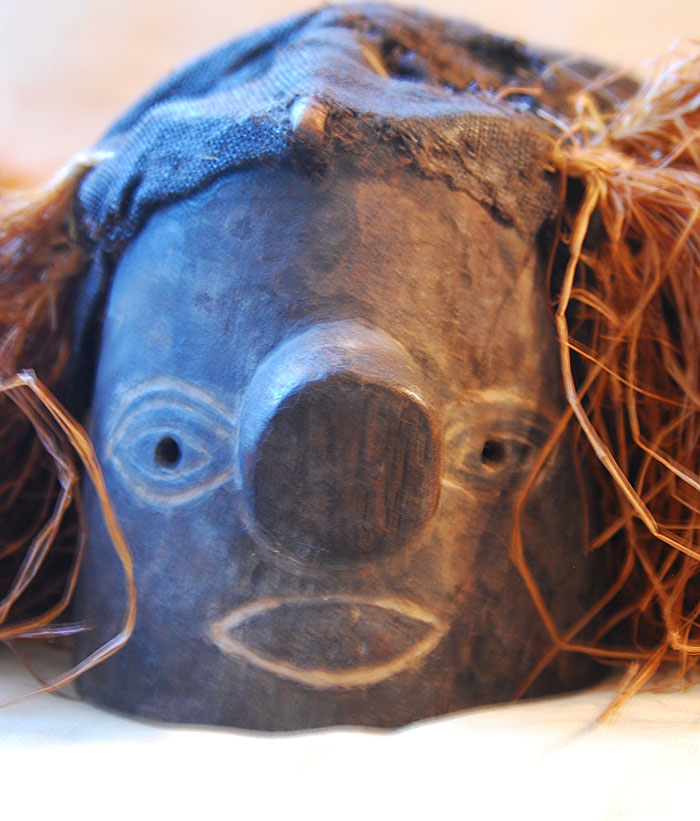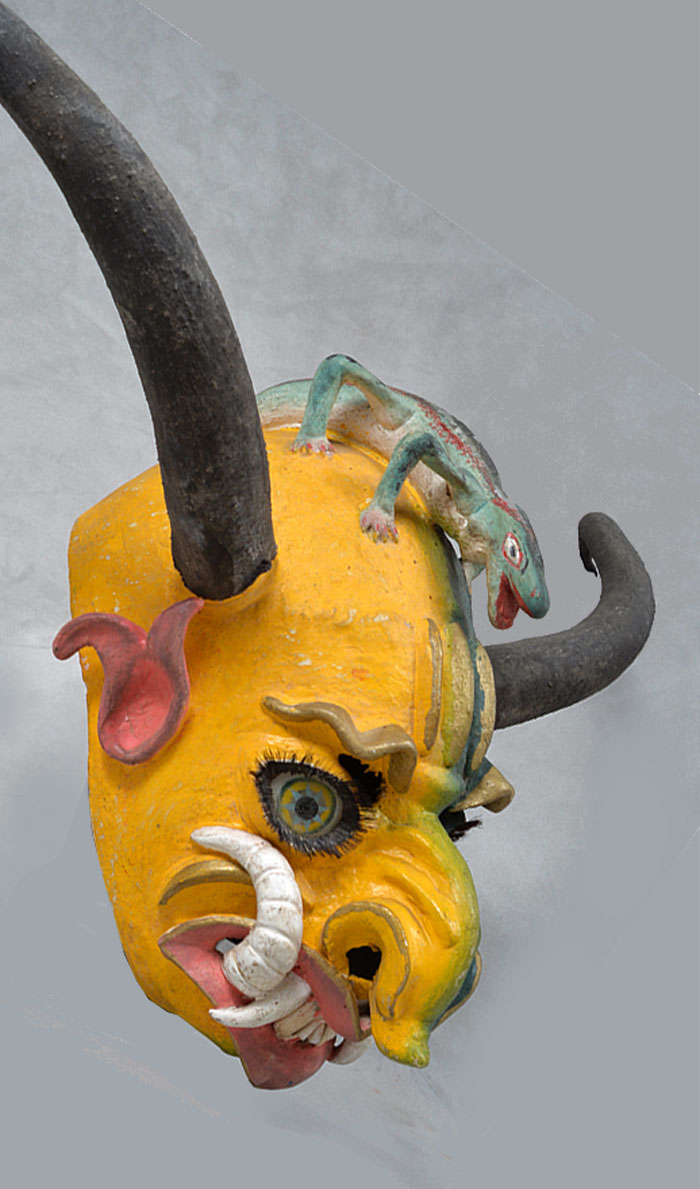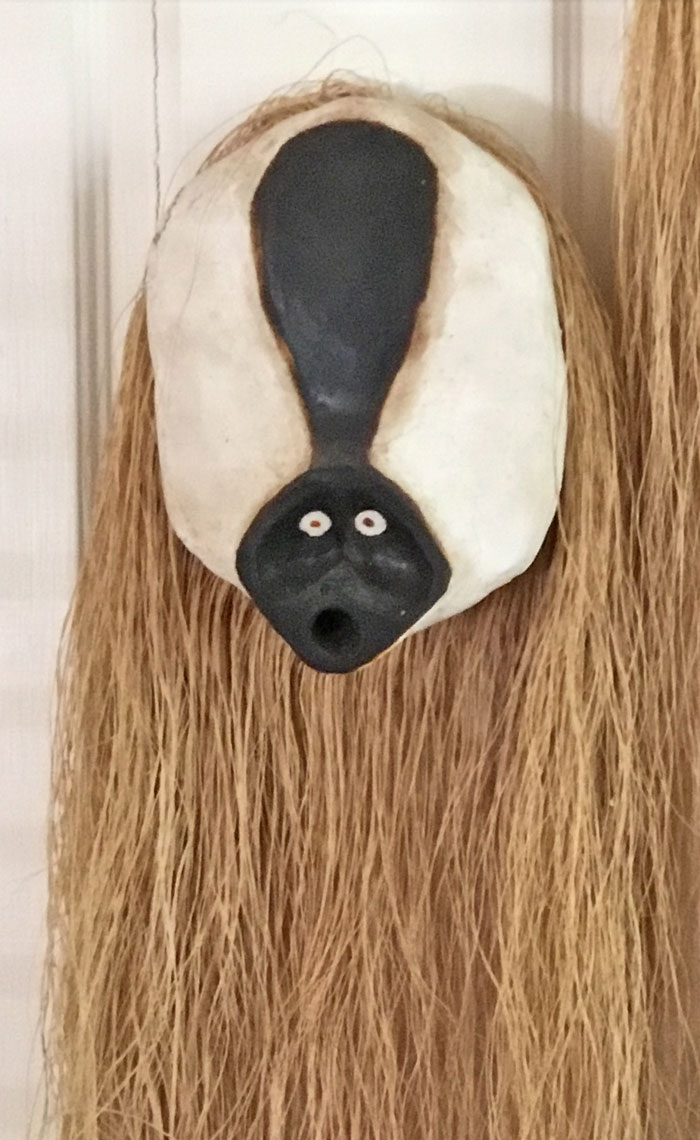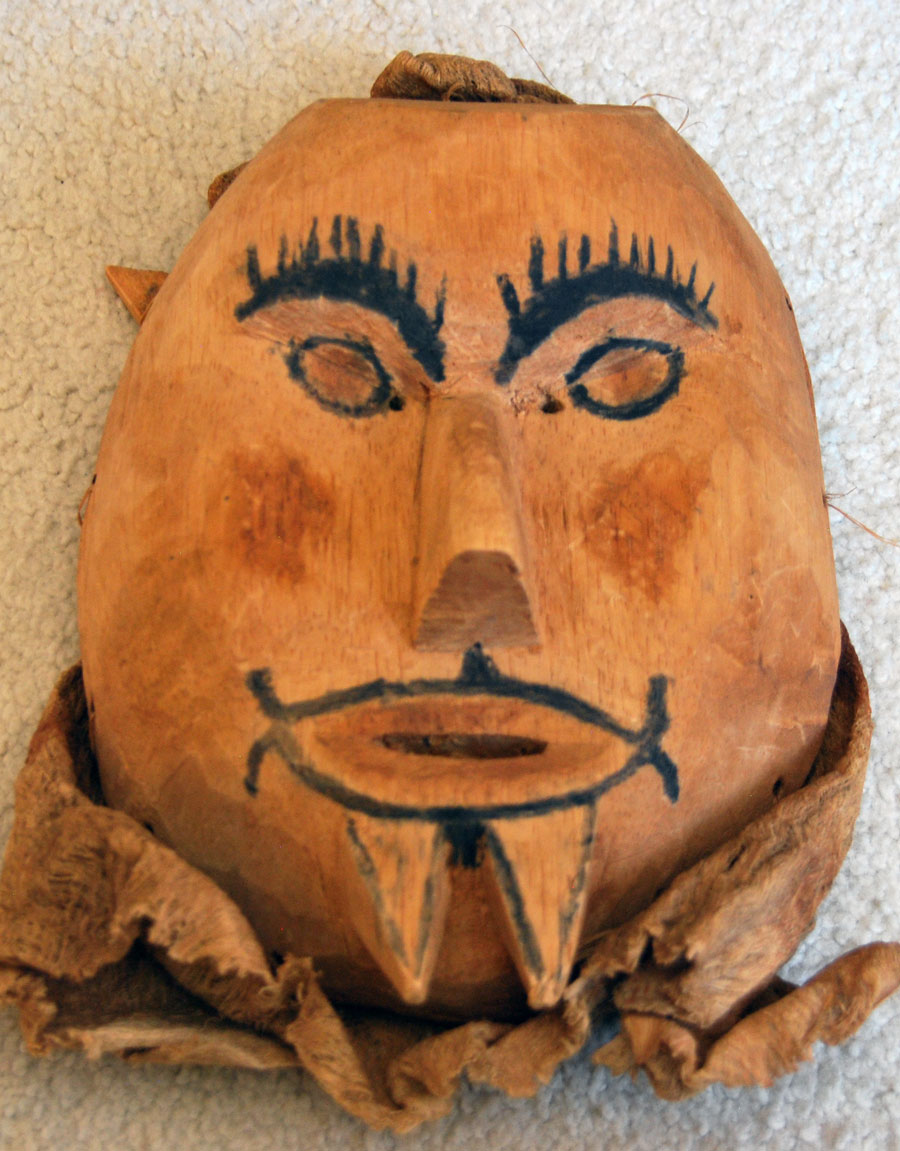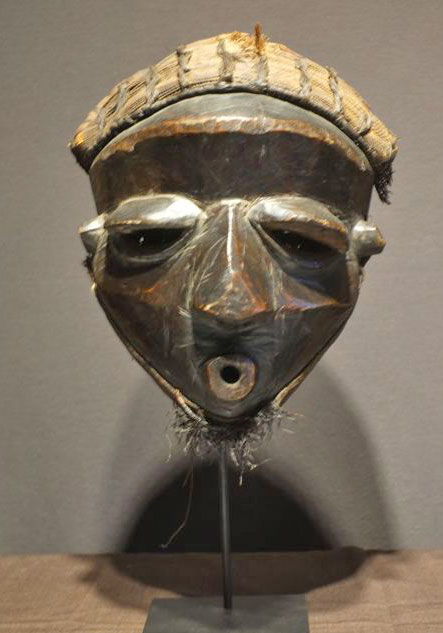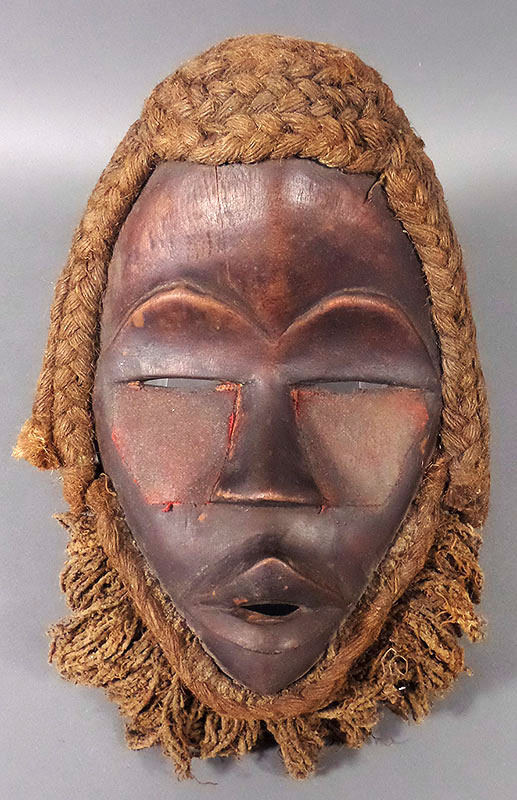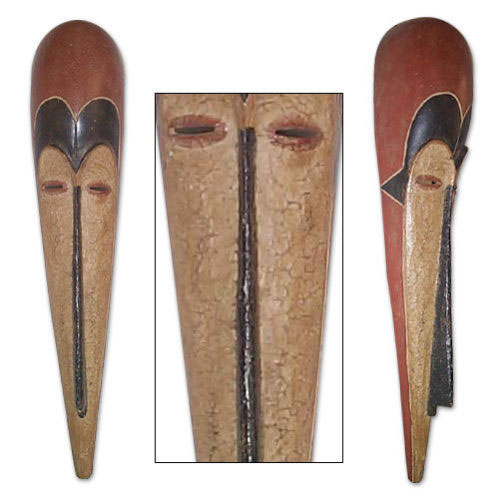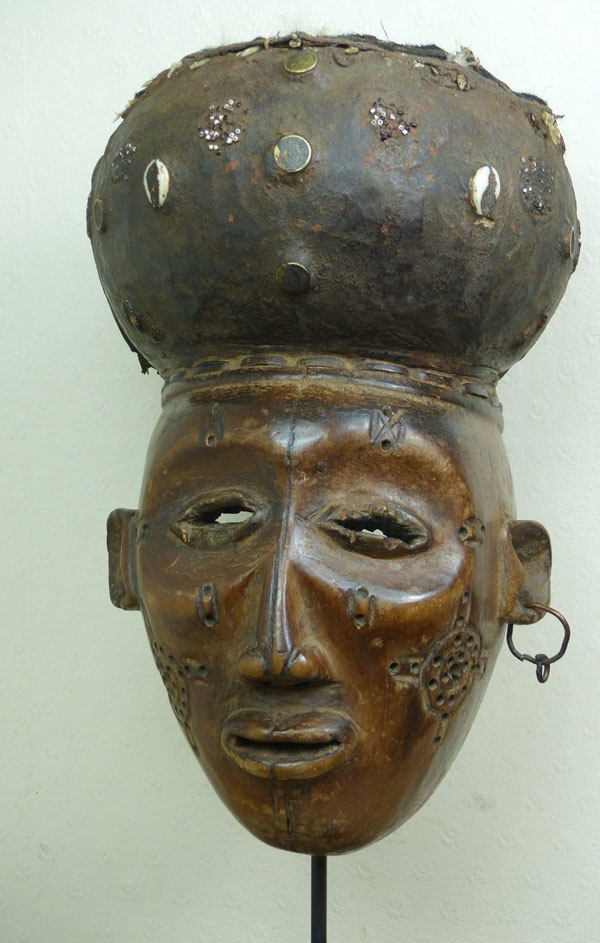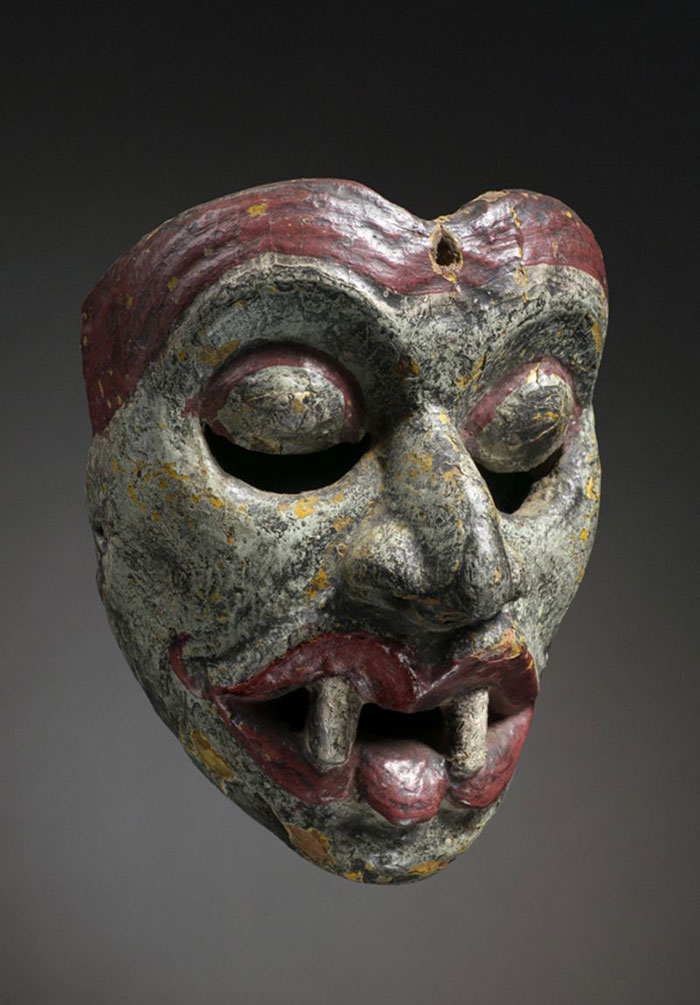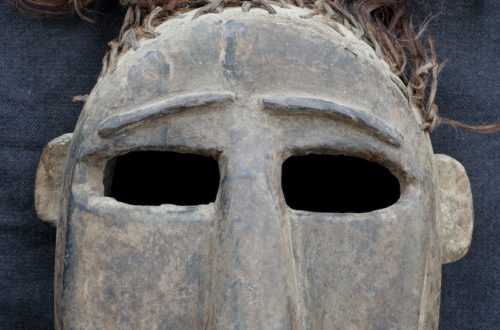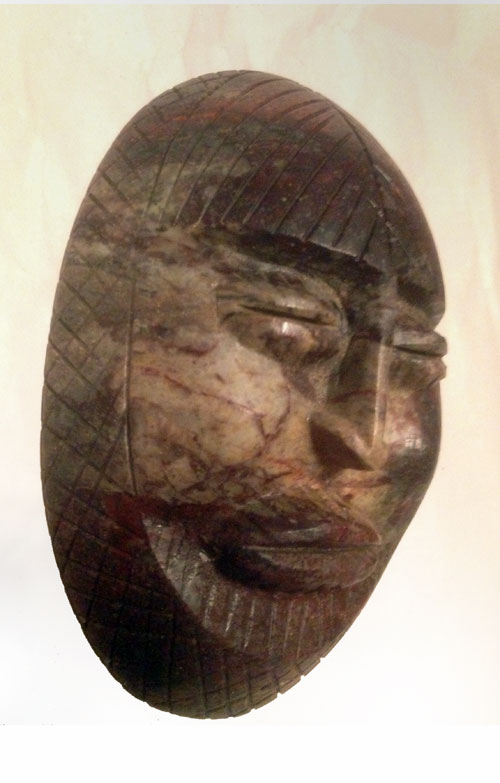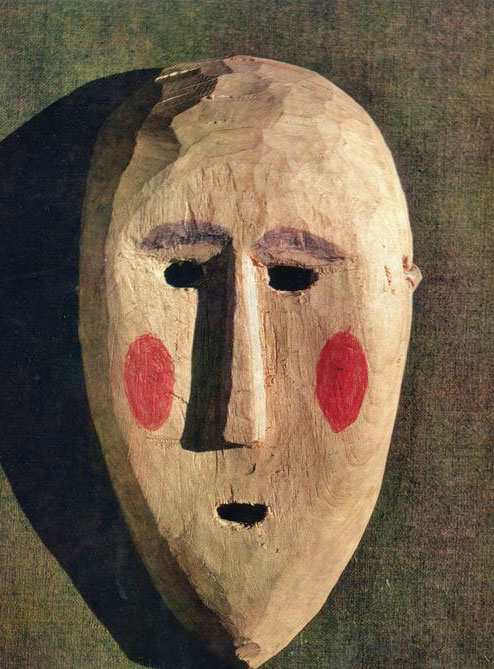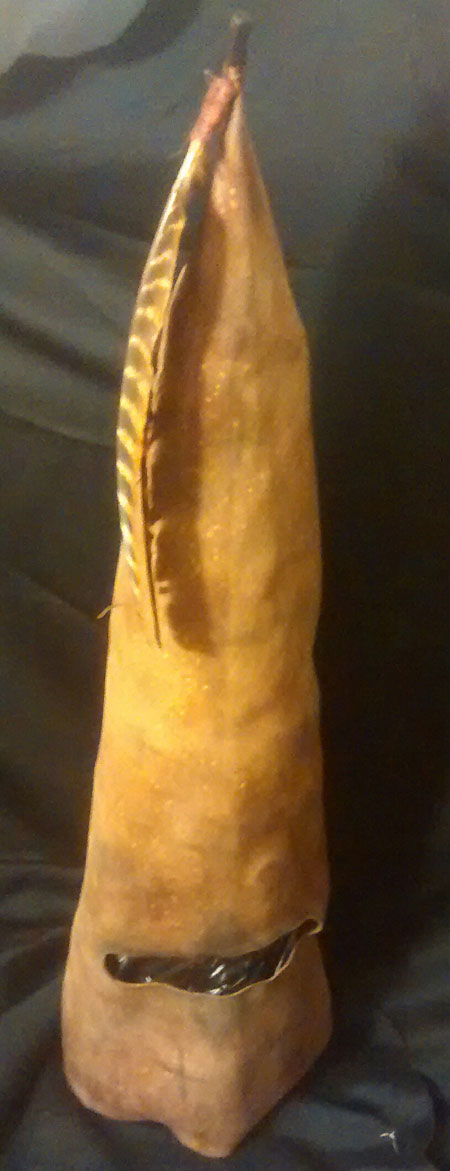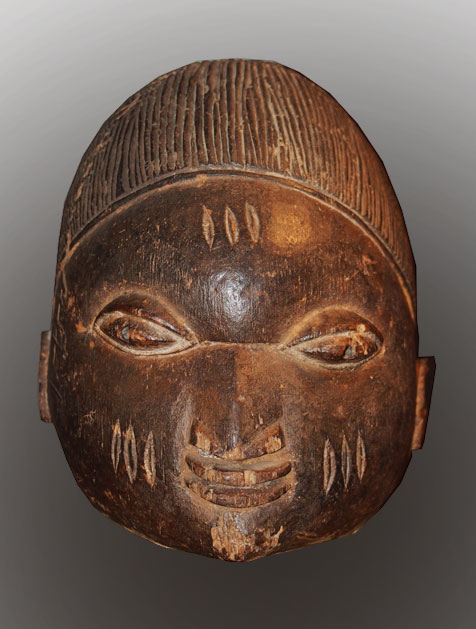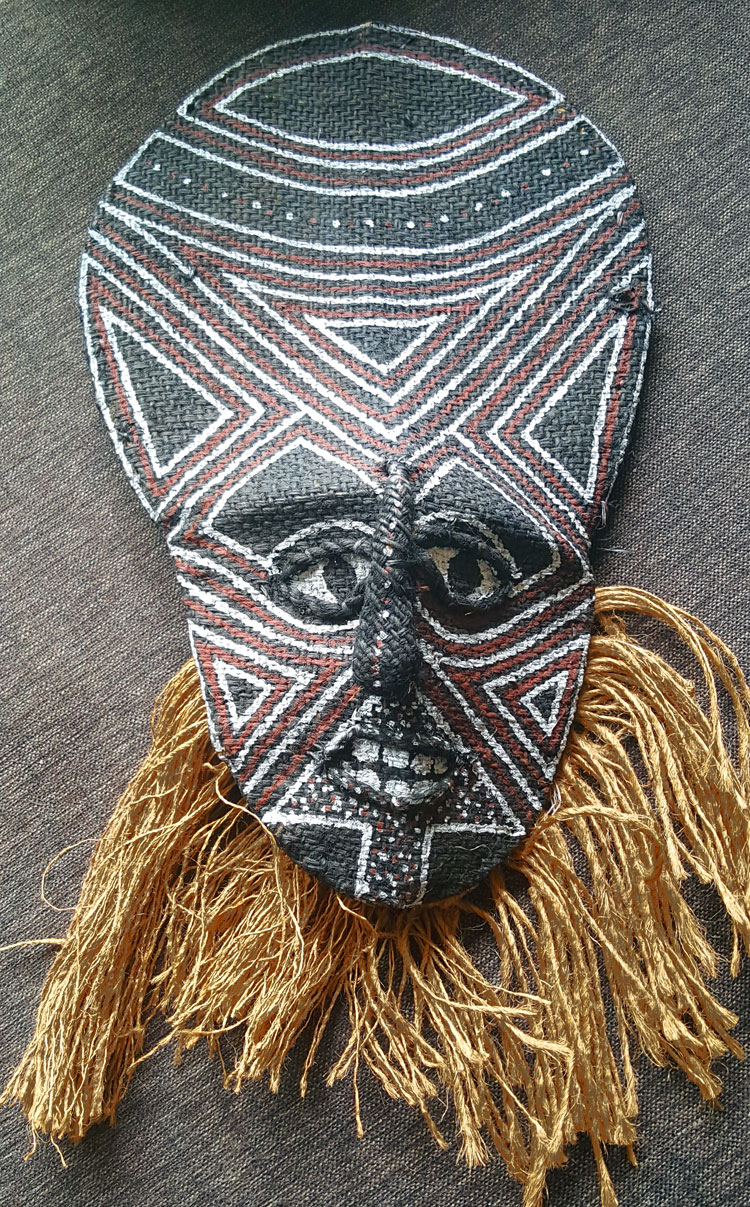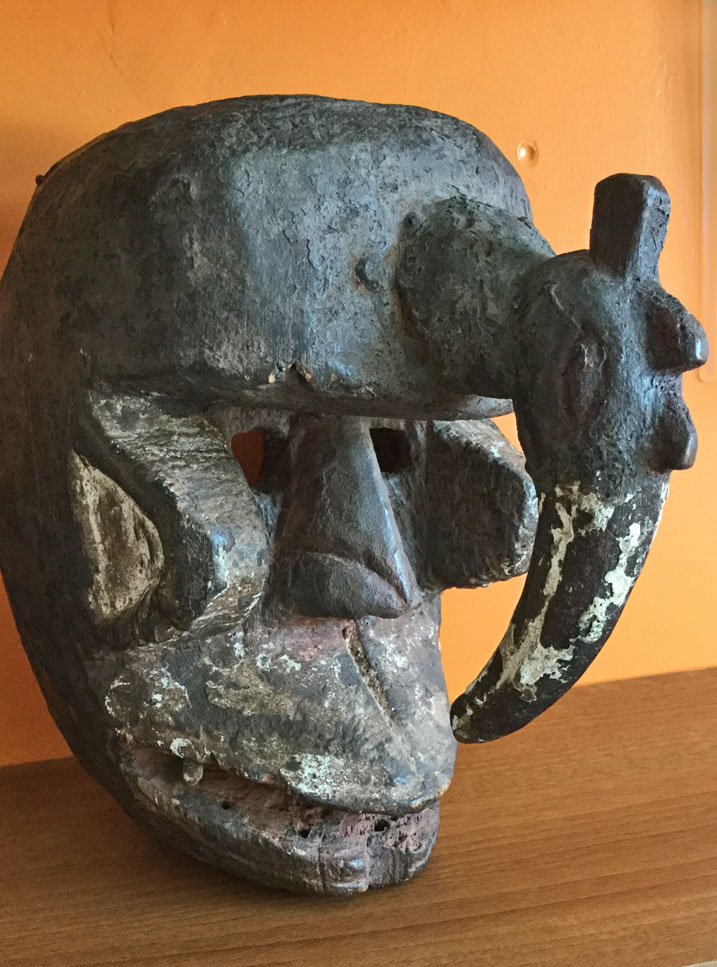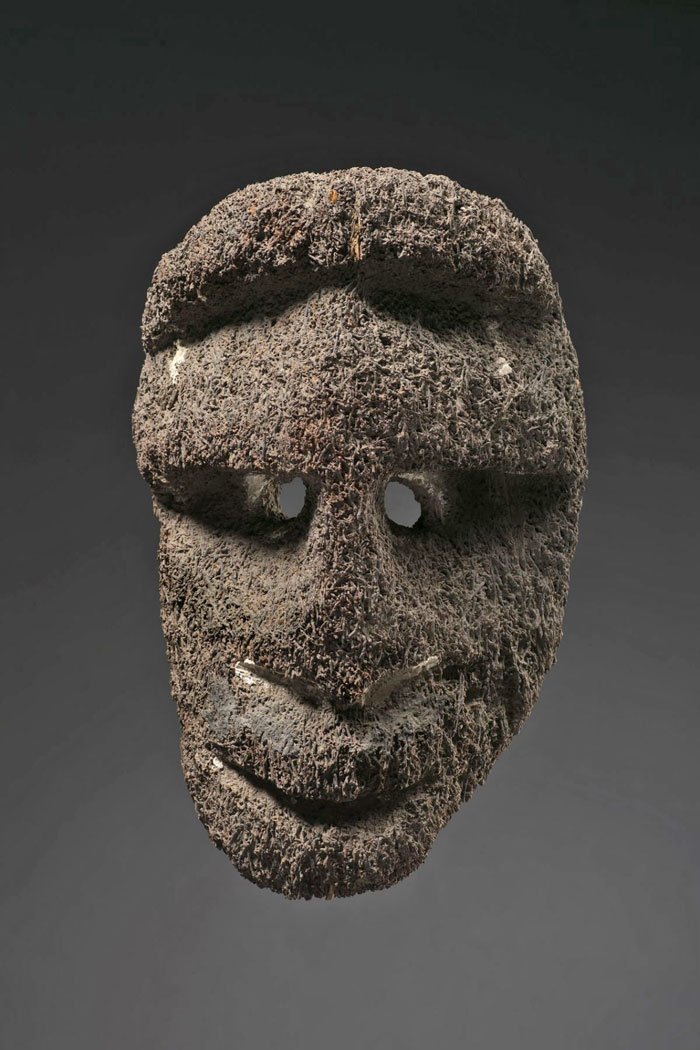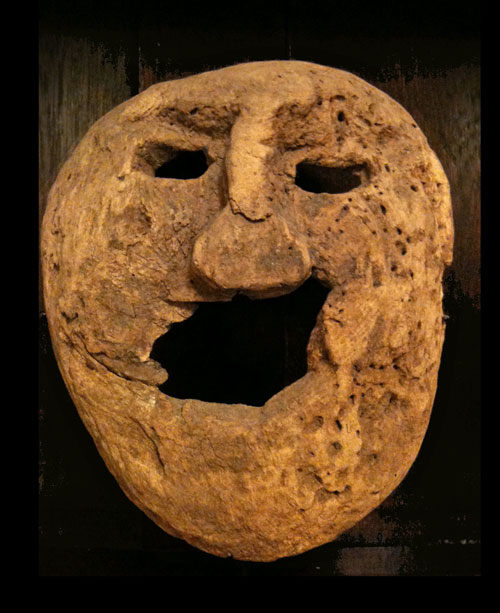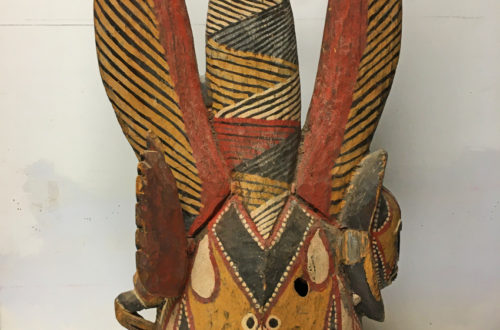Q: Here are the masks. They were purchased at a garage sale in British Columbia, Canada, but they don’t look like local native art at all. The wood and materials used are unfamiliar to me, particularly the shell used on the top & bottom of one. The fur, hair & whiskers seem to be real but I’m not sure of their origin. There were about 8 in a box at a “collectibles” garage sale & when I asked about the origin they only knew that they came from a man who had collected them. I have tried to ID the currency but can’t. Since they have price tags they may…
-
-
Chivo mask from Hidalgo, Mexico
Q: This one has me a bit confused. Would love your commentary. Twisted nose makes me think Mexican and off the top of my head I can only think of tourist pieces that depict this twisted nose. However, the real goat horns, heavy wood, patina all scream Guatemalan to me and ethnic use. The horn tips have holes evidencing that this once had bells or the likes attached to it… that too makes me think more in the direction of Mexican than Guatemalan, although fitting for both. 51% leaning in the direction of Mexican…given the lines on the front, color choices and the nose again. Nate, 1240 A: This is…
-
Mask made from a turtle shell
Q: I just bought this unusual turtle mask at a local thrift/consignment shop for $25. I’ve no idea of it’s origin or function and hesitate to take a guess! Would appreciate any information you can give me about it. Mickey, 1239 A: Turtle shells can be the right size and weight to fit nicely over the face of a performer. I think they have been used as masks for thousands of years in certain parts of the world. Of course, it’s harder to find them than masks made with more common materials. Yours might come from Central Africa, Melanesia (PNG, etc.) or the Himalayan region. It will be a very…
-
Old masquerade traditions in Portugal
The Careto tradition is a pre-historical Celtic religious ritual still practiced in some regions of Portugal, namely in the villages of Podence and Lazarim. It currently takes place during Carnival and is one of the oldest traditions being practiced in Portugal today. Caretos are masked young men dressed in suits made of yellow, red, black, blue and green fringe wool quilts, wearing brass, leather or wooden masks and rattles in their belts. Their masks can vary greatly from village to village.They appear in groups from every corner of the village running and shouting excitedly, frightening the people and “robbing” all the wineries. The main target of these masquerade groups are…
-
Animal mask from the Amazon?
Q: Found this mask at a local flea market this summer. Didn’t pay much for it, or several others from the same guy. I have not seen any like them before. The top is an old cloth with a soft wood framework supporting it. Not counting all the raffia it is about 10 inches long by 7 inches wide. Height is 5 inches. I really got lucky at the flea market when I picked up these 9 great masks for under two hundred dollars. Fred, 1236 A: I’m going to guess and say this comes from the Piaroa-Huarime people who live along the Orinoko River in the northern Amazon basin.…
-
David Norden Buy African Antiques
Check out this auction that is starting tomorrow at a French auction house called Catawiki. There are five African masks from David Norton for sale. The quality appears to be very good, starting bids are reasonable, and the auction charge is just 9%. The one I’m showing is a Mbuya from the Pende people living in the Democratic Republic of the Congo. The others are Kuba, Winiama, Ituri and Lega. Nice masks.
-
Sinhalese mask from Sri Lanka
Rrakasa Mask Sri Lanka Wood, pigment Early 20th Century 7 inches A stunning mask by any measure, this demon portrayal was used to heal through exorcism. Thomas Murray www.tmurrayarts.com I think it is important for collectors to know that the unique masks we think of as Sri Lankan comes from the Sinhalese people who occupy the southern and central parts of the island. A majority of Sinhalese people adhere to Theravada Buddhism rather than Hinduism.The origins of the Sri Lankan Civil War lie in the continuous political rancor between the majority Sinhalese and the minority Tamils who live in the north. The roots of the modern conflict go back to…
-
Another Eskimo mask from Alaska
Q: I bought a series of Yup’ik masks from an antique dealer–they were from an estate sale and had been originally purchased in the 1950s. I just wanted your opinion of this particular one (which is one of the two best ones in the collection). The dimensions are 22″ high, 8″ wide for mask alone, 14″ wide including lattice sticks on side (which I think represent ripples in the water) but not including appendages, and about 2 1/2″ depth for mask alone (not including appendages). Matthew, 1234 A: Yup’ik masks play an important role in the ceremonial life of these Eskimos who live close to the Bering Sea. A…
-
Blended mask from West Africa
Q: Please help me identify what kind of mask is that and if its authentic or any information you can give me will be highly appreciated. Thank you! Natalya, 1233 A: You can easily say this mask is from somewhere in West Africa. It certainly has a nice looking face with a great bird on top, but I can’t tell what tribe made it. The design elements are a mix coming from different cultures in that part of Africa. We see a lot of blended masks these days. This should not surprise– Africans, like us, can easily see masks from other places. Authenticity means used for celebrations rather than sale…
-
Fern mask from Thomas Murray
When I see something this unusual I just have to pass it along to our readers. Ritual mask Malekula Island, Vanuatu Fern root 19th or early 20th Century 13.5 inches This mask of extraordinary presence and age is likely to have been carved on Malekula Island for a spirit ritual. The purpose of such pieces has not been well documented but the great ones, as in this case, are plainly early. Save
